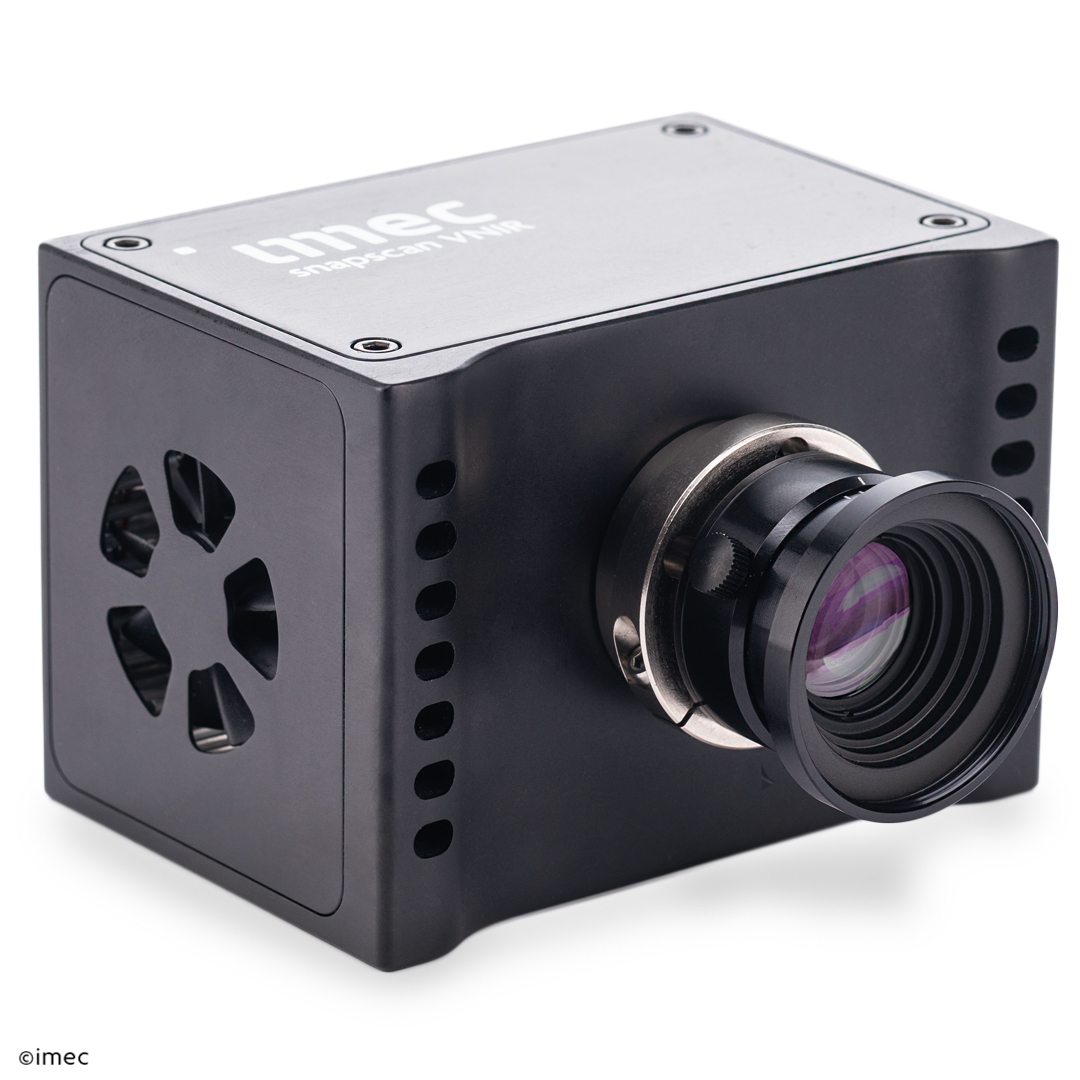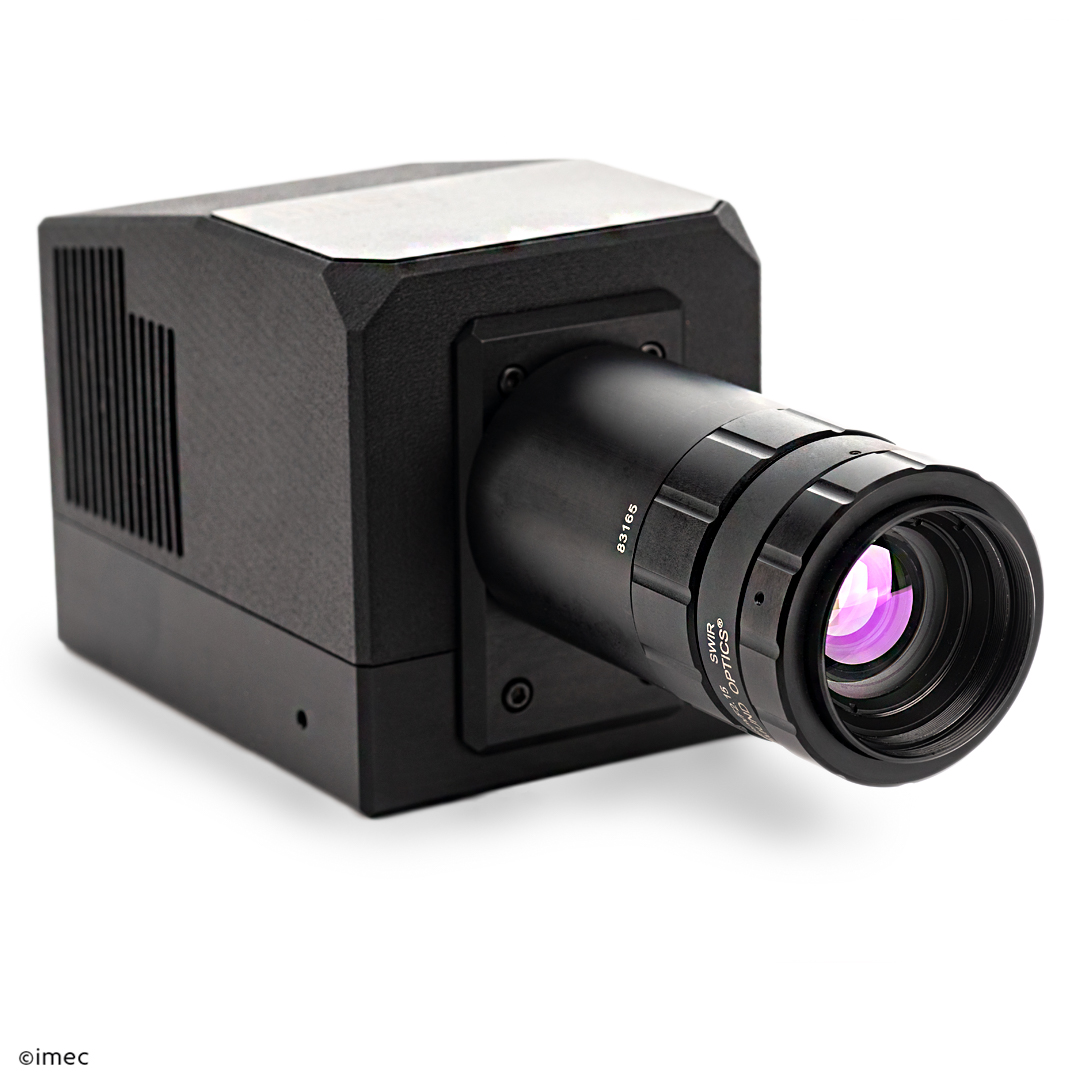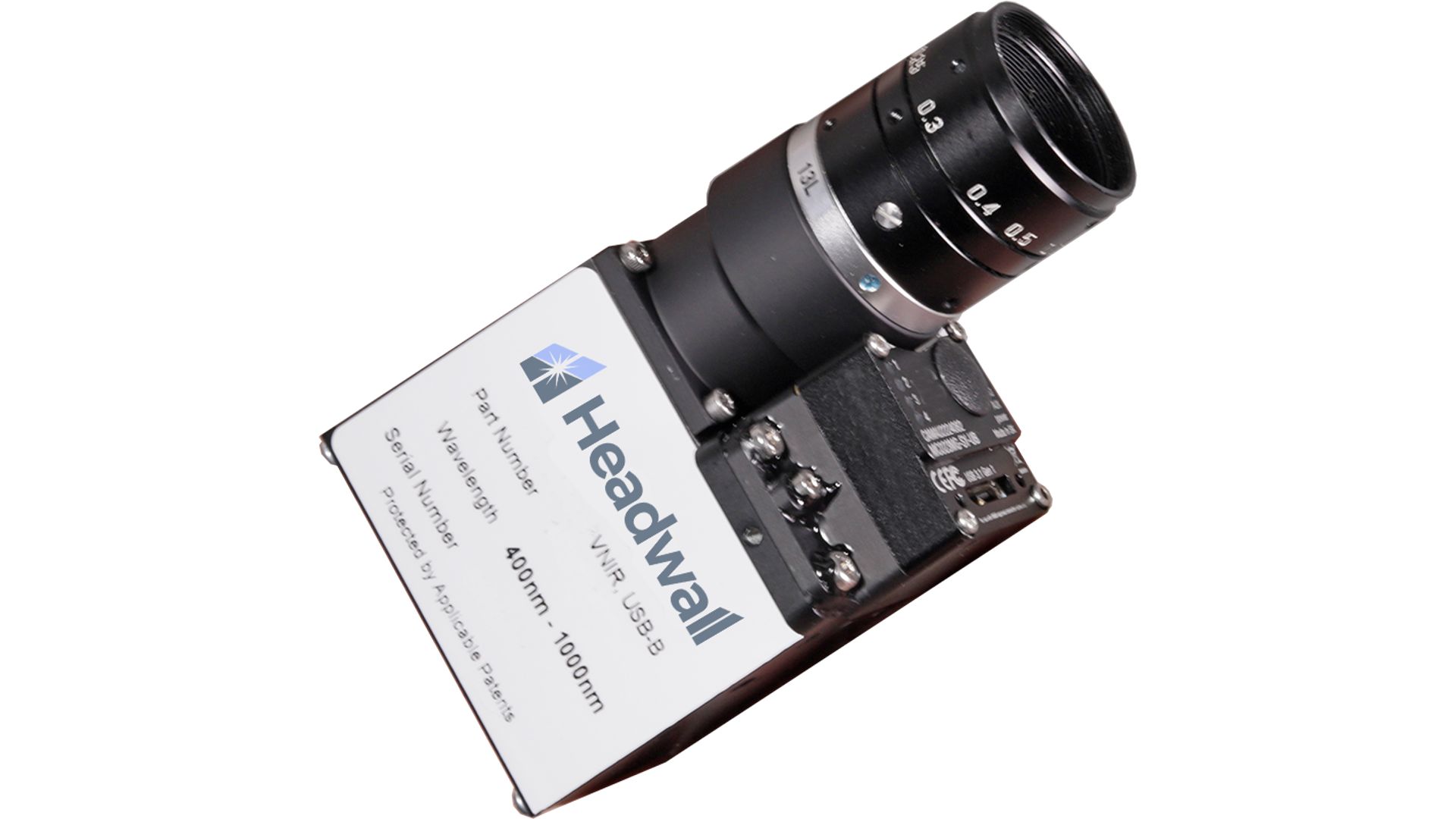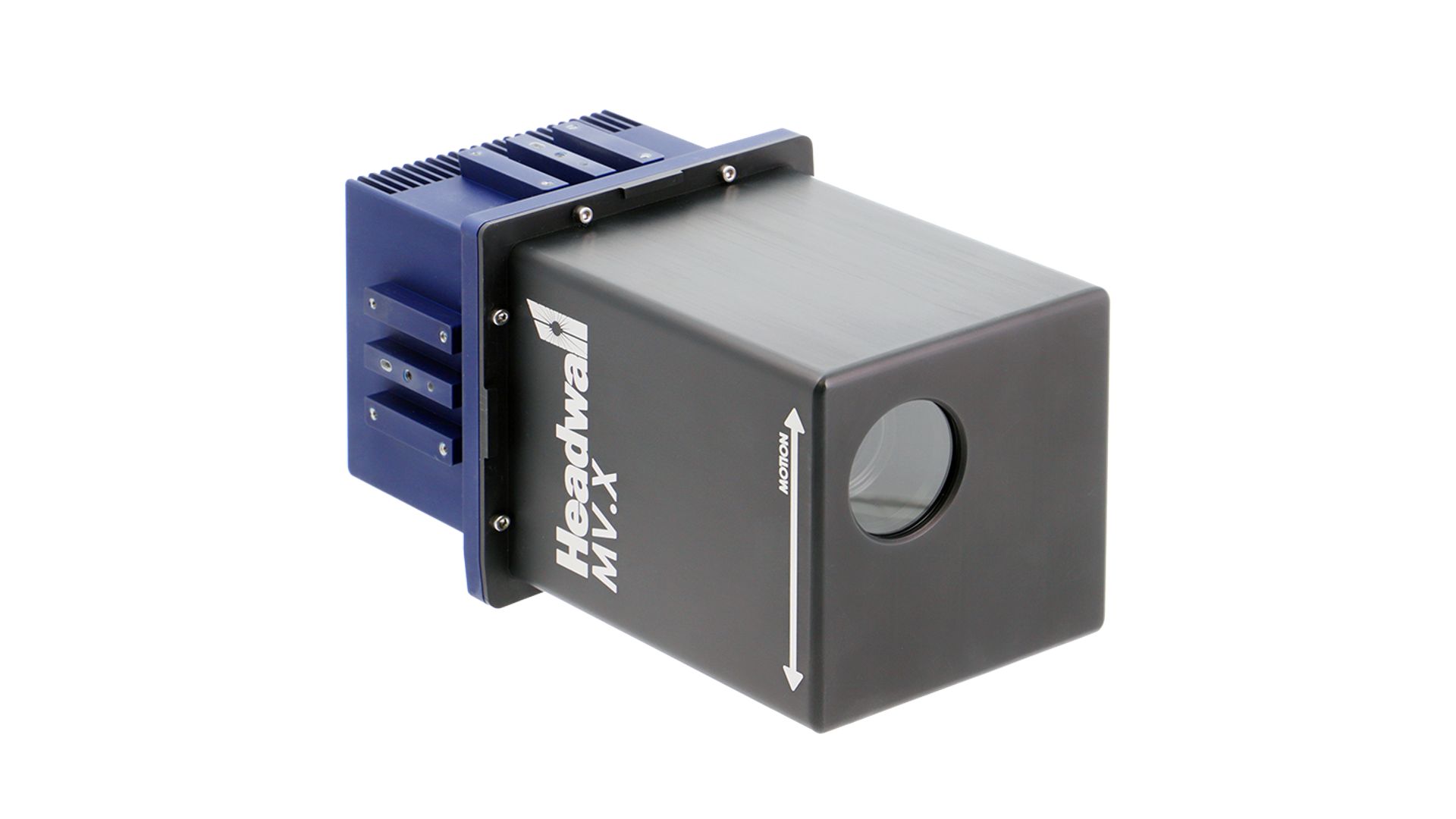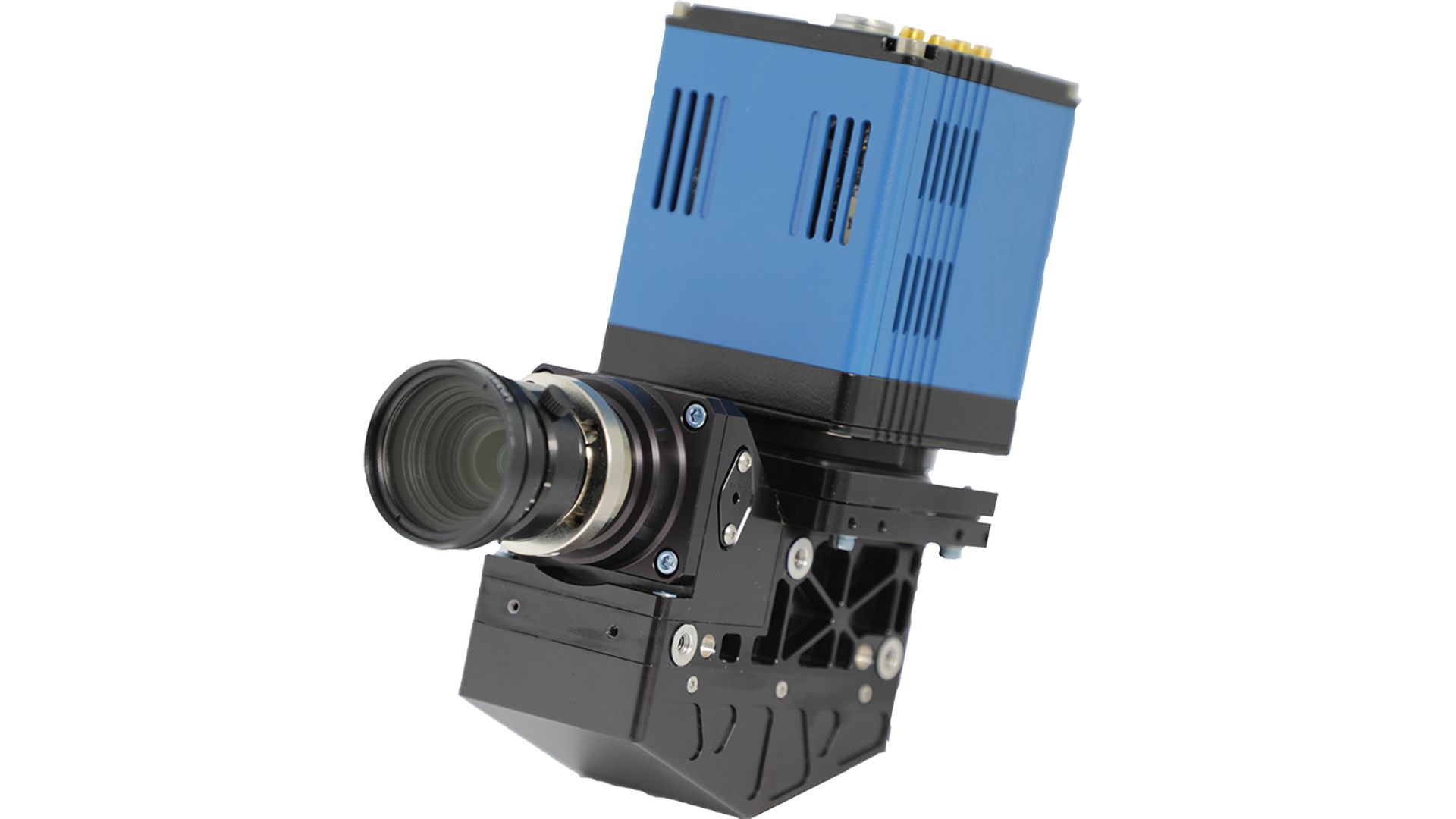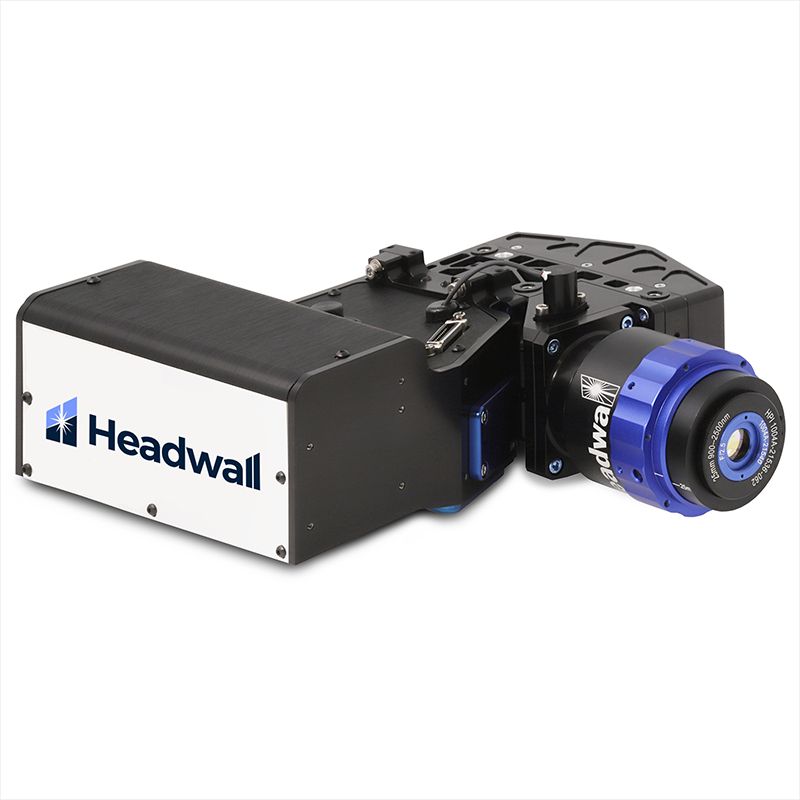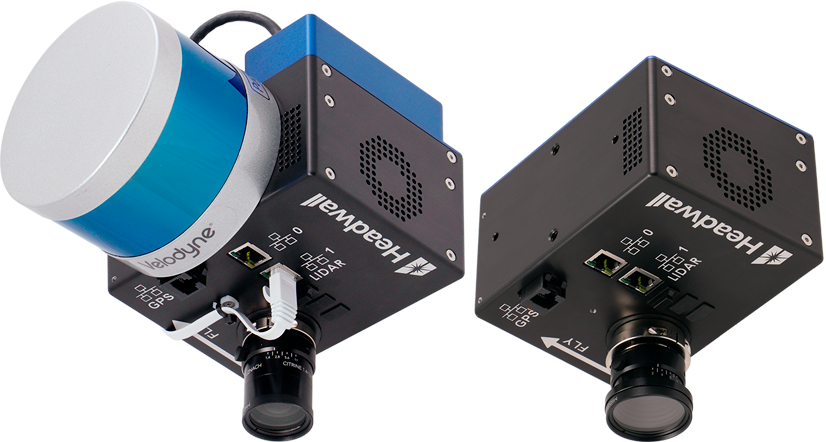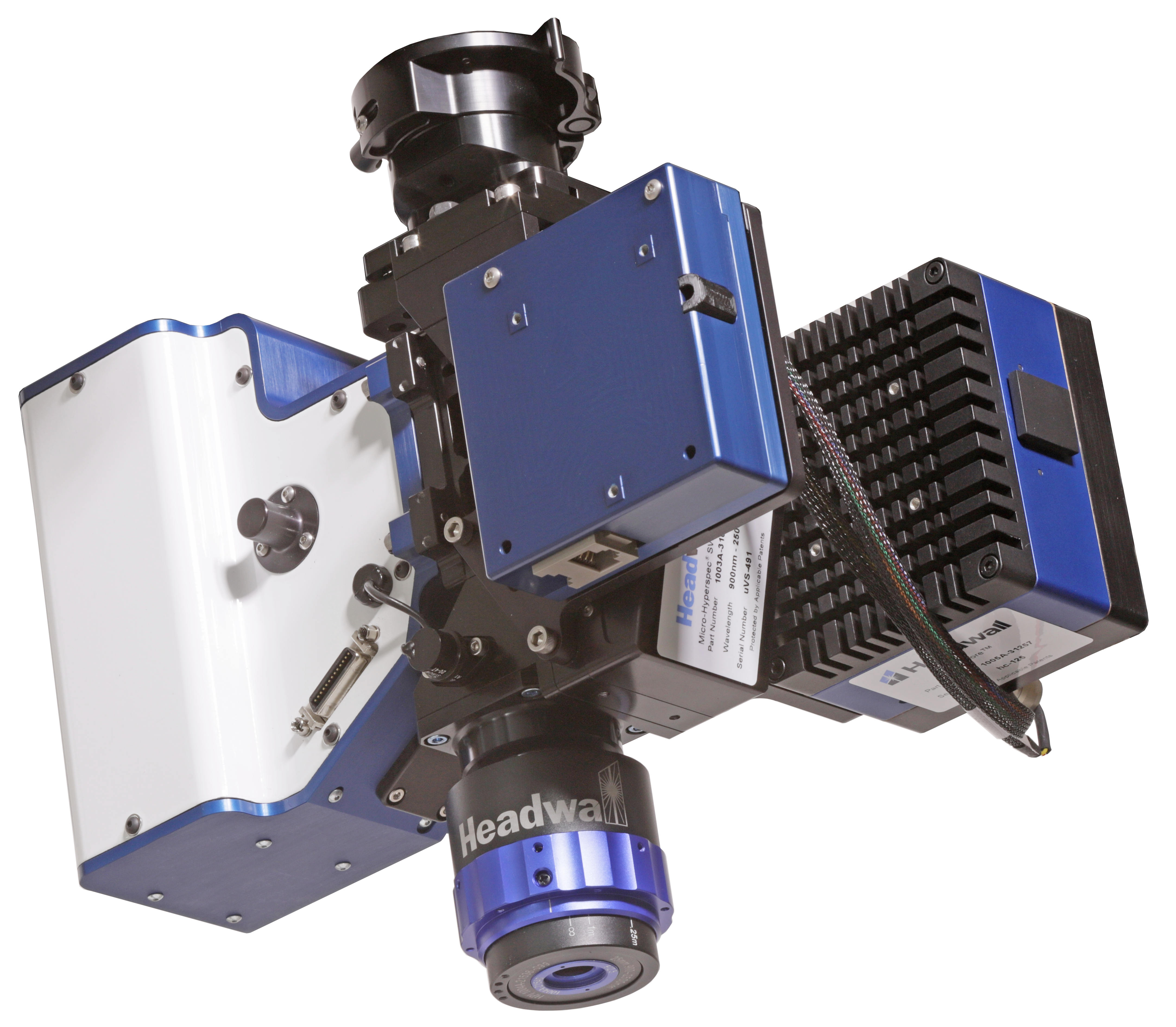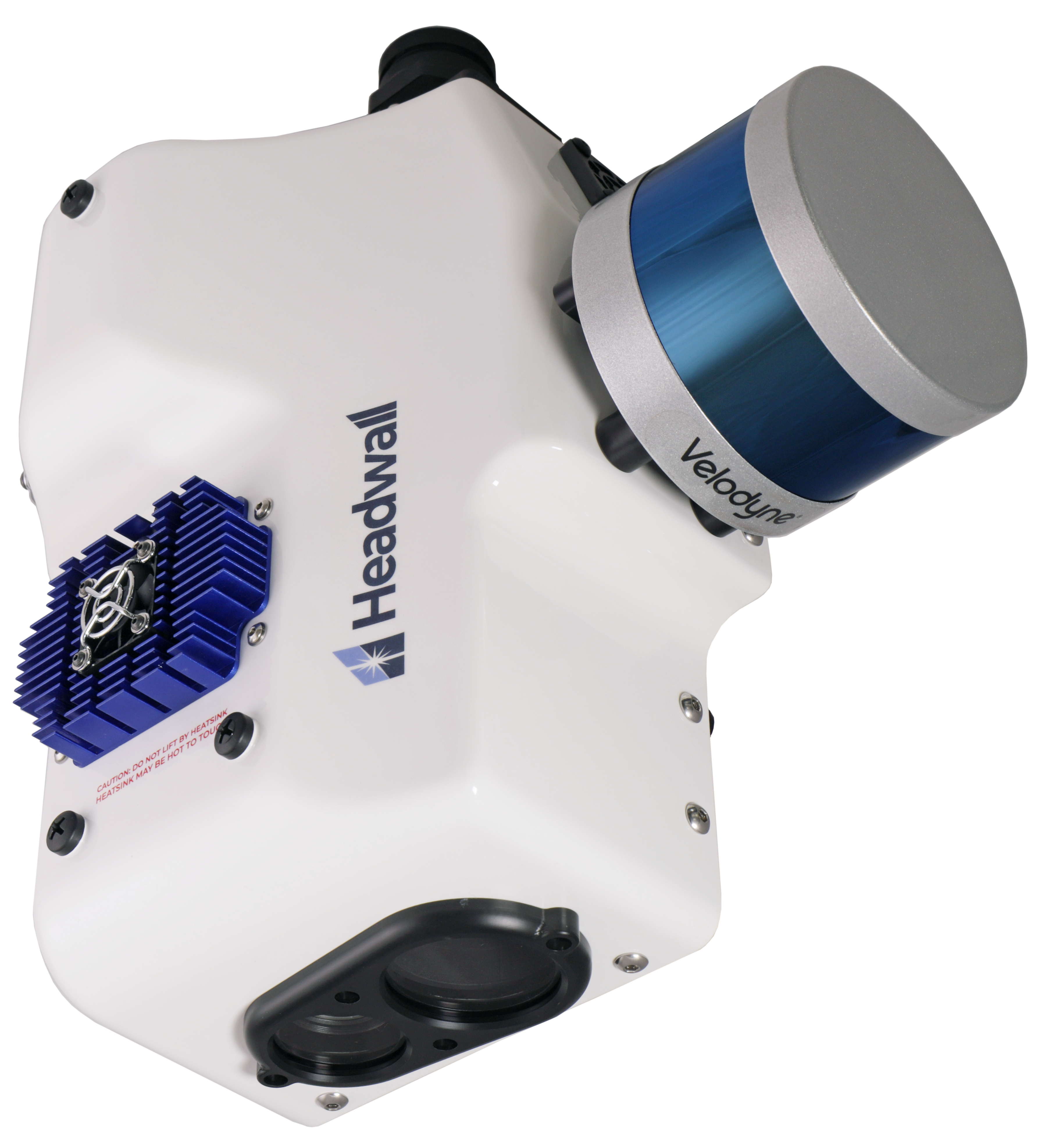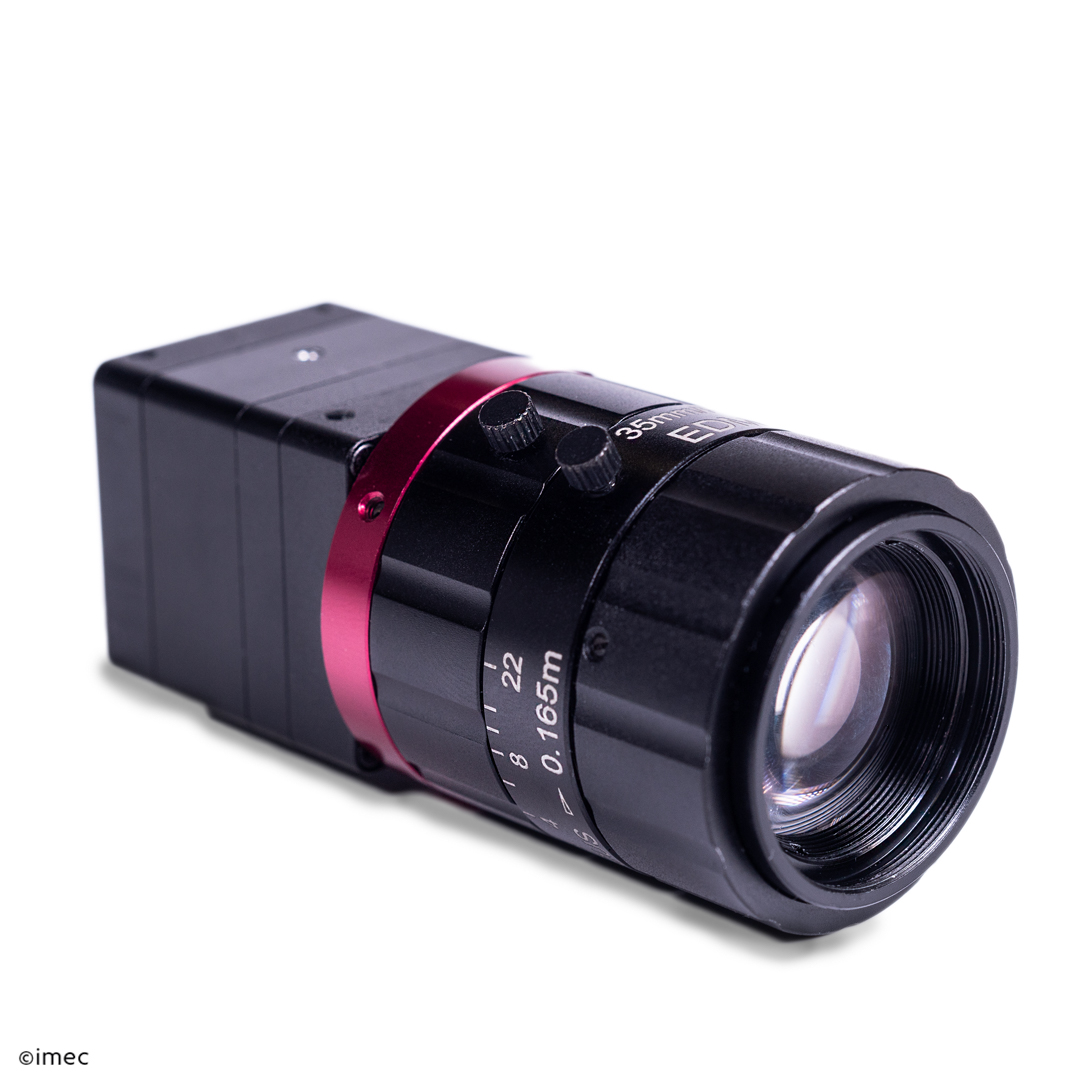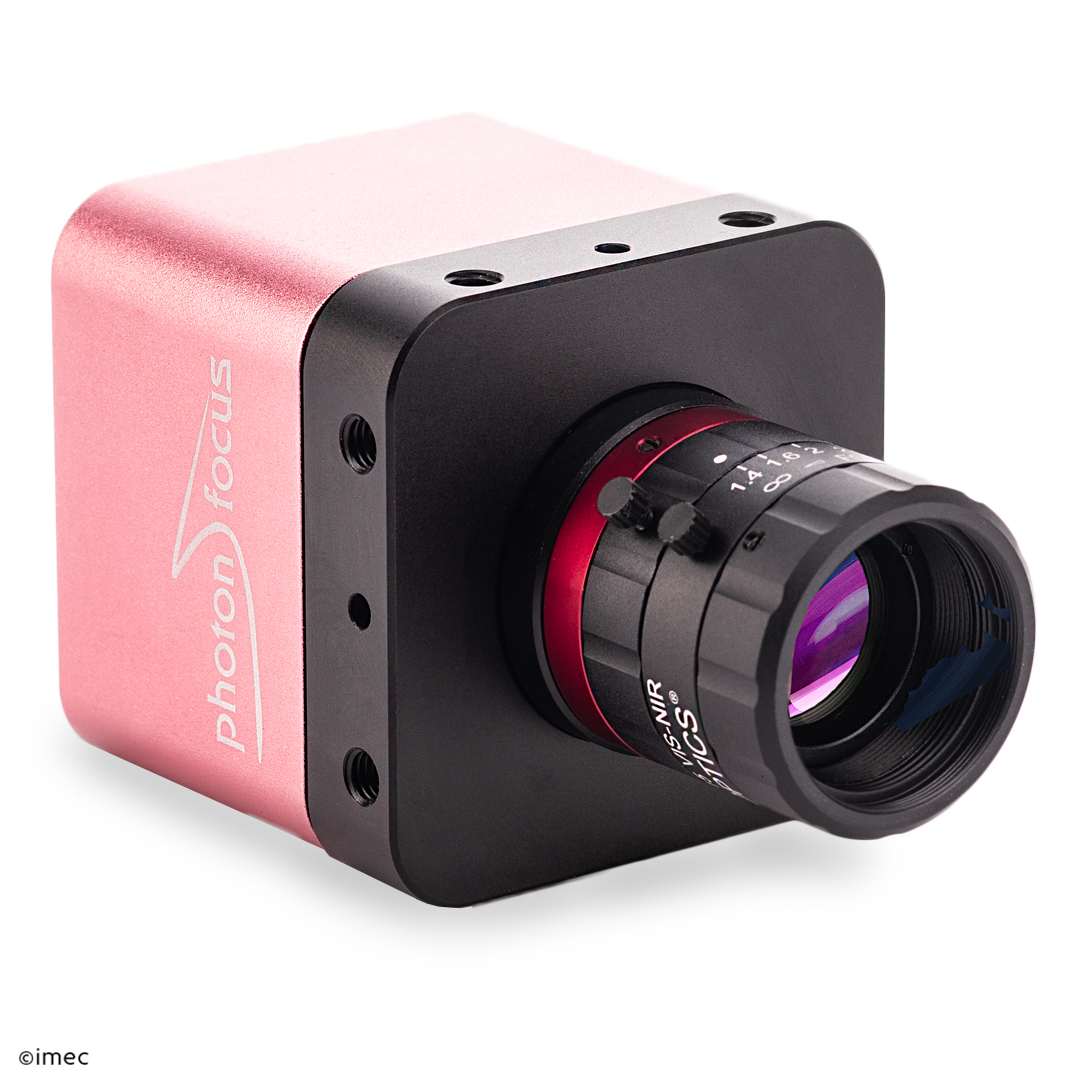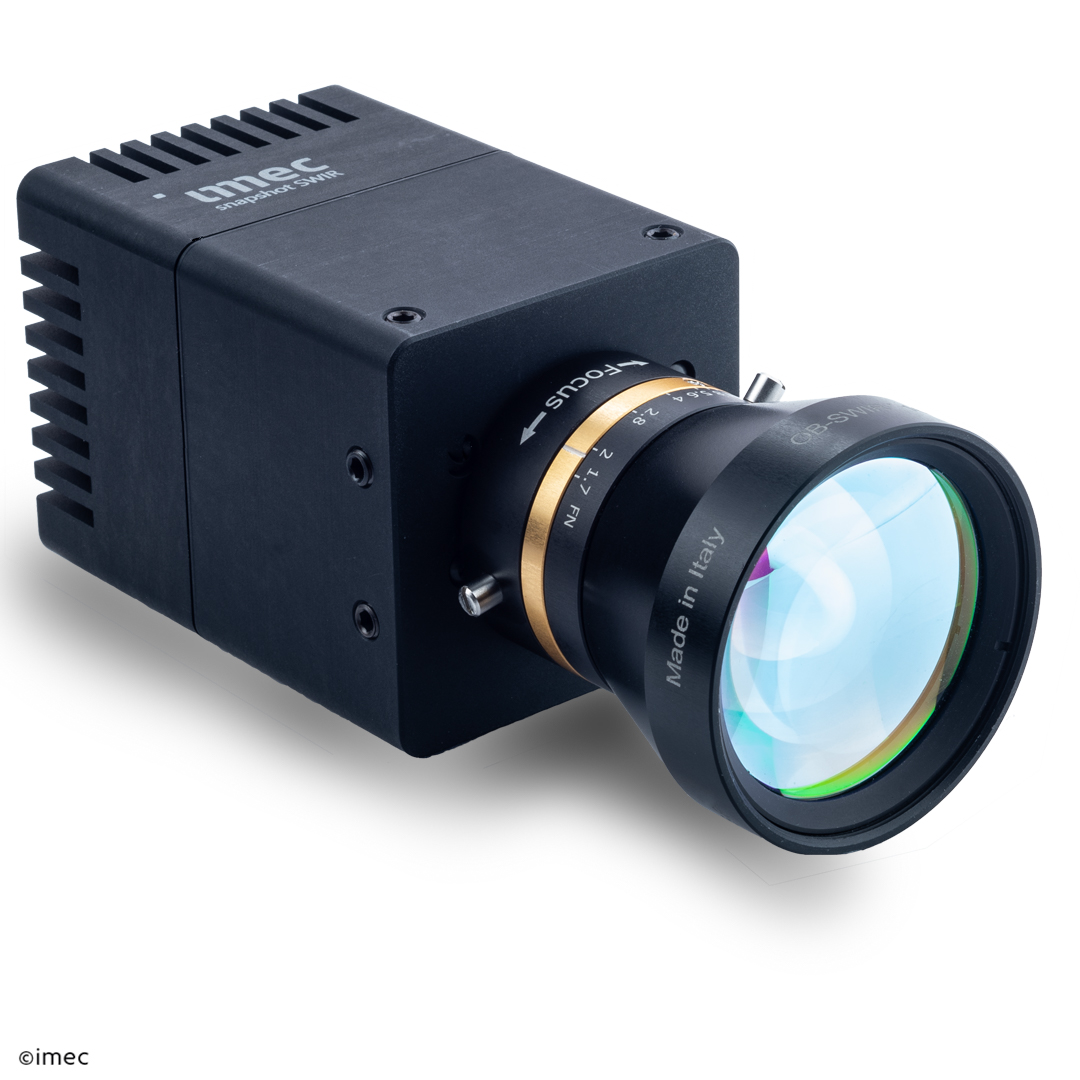VIS / SWIR HyperSpectral Imaging
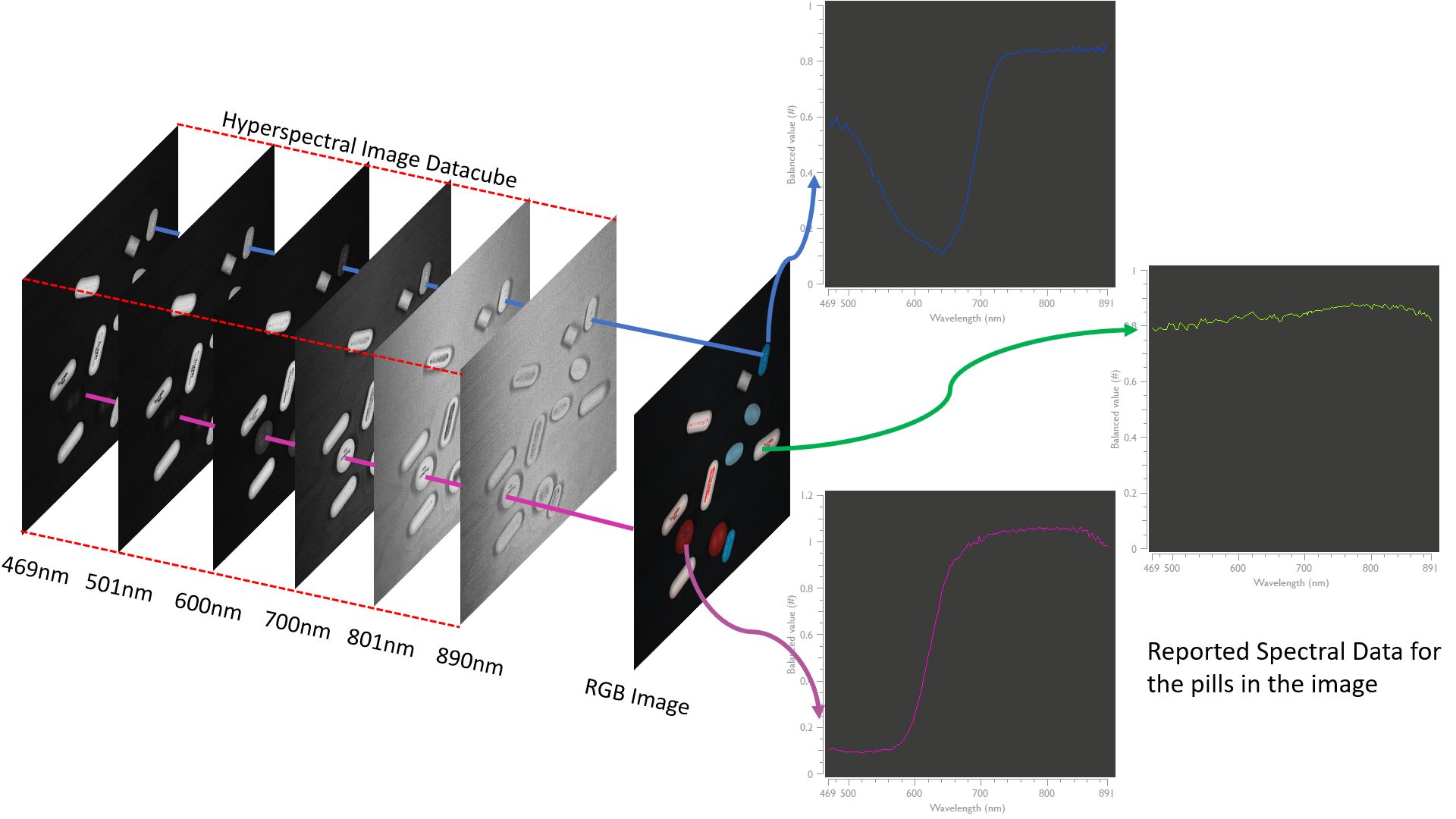
As detailed in our Knowledge Base articles on the topic, Hyperspectral Imaging (HSI) technology enables the acquisition and analysis of images that reveal the spectral distribution of light that is collected at each pixel site within an image. In HSI both spectral and spatial information about a sample are obtained. It is analogous to having spectrometric data for each pixel in an image.
A hyperspectral image is a set of image planes, with each image plane representing the spatial intensity distribution at a particular wavelength. This data can be represented as a λ-axis that is orthogonal to the conventional (x,y) axes used to spatially represent image data. The combination of all the acquired spectral layers is called a hyperspectral data cube.
Our Knowledge Base on this topic shows the different methods that can be used to produce hyperspectral image datacubes, each representing a particular tradeoff. Each applies different techniques to spectrally filter the light and capture the spatial and spectral image data. Each of the different methods of acquiring hyperspectral image datacubes emphasizes one or more of the following key differentiators:
- acquisition speed – the time required to capture the hyperspectral data cube
- snapshot capability – the ability to acquire a hyperspectral image, without scanning
- spatial resolution – the size of the pixel array, similar to regular photography
- spectral resolution – the number of frequency bands (or layers) each hyperspectral image contains.
No External Moving Parts
Ideal for use in a laboratory or in the field with samples that are stationary
High Spatial and Spectral Resolution
HSI Snapscan software included
Laboratory setup (including illumination) offered as an option.
Can be used directly with microscopes.
High Spatial and Spectral Resolution
Ideal for use in a laboratory or in the field with samples that are placed on a stage or in UAV based remote sensing applications
Inspection systems may be configured with a stage and illumination for lab-use or deployed in high-throughput commercial settings.
For remote sensing, users may purchase individual payloads -or- fully-configured turnkey systems that include UAVs.
Hyperspectral Imaging at video rates
Small size and weight - well suited for UAV based imaging or for handheld instrumentation
Ideal for laboratory or field use on fixed or movable platforms including UAVs
Acquisition speed is prioritized over spatial and spectral resolution
HSI Mosaic software included. Laboratory setup (including illumination) offered as an option.
Snapscan Cameras
lmec’s Snapscan [VNIR or SWIR] high resolution hyperspectral camera technology is a major breakthrough for hyperspectral imaging application research. A high quality hypercube data is created within a few seconds with high signal-to-noise ratio and unmatched spatial and spectral resolution. While the Snapscan kit enables application research of the highest quality, it is user-friendly since it does not require an external scanning system. It integrates all key components required: the spectral image sensor, optics, illumination and imec’s hyperspectral imaging software: HSI Snapscan.
Snapscan selection table
Click on a green button within the above table to get more details about a particular camera model.
Pushbroom HSI Cameras for Inspection Applications
Headwall Photonics Pushbroom HSI cameras enable uncompromised spectral and spatial resolution HSI in machine vision and scientific applications. Headwall’s sensors cover wavelength ranges beyond the ability of the human eye to discern, from the ultraviolet and visible (UV-VIS) to the near-infrared (VNIR, NIR, and SWIR) wavelength ranges.
These pushbroom HSI systems are an excellent choice for distinguishing spectral features and detect potentially harmful foreign matter. They provide a means to sort and grade material such as food products, where value is often tied to characteristics that are often better and more consistently measured by an HSI system.
Inspecting food such as poultry, beef as well as crops such as nuts and involves looking at vastly similar-looking items with small degrees of variability. With Headwall Photonics' systems small deviations from a user-defined "acceptable" quality can be distinguished.
Offered as turnkey scanning systems along with perClass Mira® software, these systems enable users to leverage their domain expertise from fields such as fruits, meat, plastics, coatings, cheese, or chocolate to create and deploy automatic interpretation solutions without programming expertise.
Pushbroom HSI selection table (Inspection & Machine Vision)
Click on a green button within the above table to get more details about a particular product.
Pushbroom HSI Cameras for Remote Sensing via UAVs or Rotary Stage platforms
Headwall Photonics’ remote sensing systems are used by scientists and engineers in applications such as environmental monitoring, precision farming, geology, prospecting etc.
Remote sensing from UAVs or rotary stage platforms makes it possible to collect quantitative spatial and spectral data over large areas, and then analyze that data for crucial decision making.
Offered as payload-only units for users to add on to existing UAVs -or- full-turnkey solutions that include a UAV or rotary stage, these products span the spectral range from the VIS/NIR [400-1000nm] through the SWIR [up to 2500nm]. Users can select the payload (and platform) that gives them the spatial and spectral range that allows them to collect critical data that is relevant to their application.
Users can leverage sophisticated pre-flight software to configure flight plans, ensuring that the UAV traverses the area of interest in an optimal grid. During flight, HSI data is saved to onboard SSDs as an internally-mounted high-performance GPS-IMU records the position of the UAV. Post-Processing Kinematics (PPK) are used for increased measurement accuracy - an improvement over standard GPS/IMU systems. LiDAR is an option on some systems: it allows the generation of a high-resolution DEM (Digital Elevation Model) and 3D point cloud creation, which can be used for orthorectification.
Snapshot Cameras
lmec’s Snapshot [VIS, RedNIR, NIR or SWIR] range spectral imaging cameras offer a simple, fast and easy solution for the video-rate acquisition of spectral images of sample materials and their subsequent analysis.
Snapshot cameras are robust enough for lab operation as well as for use in the field, on fixed or movable platforms including UAVs.
Snapshot selection table
Click on a green button within the above table to get more details about a particular camera model.

